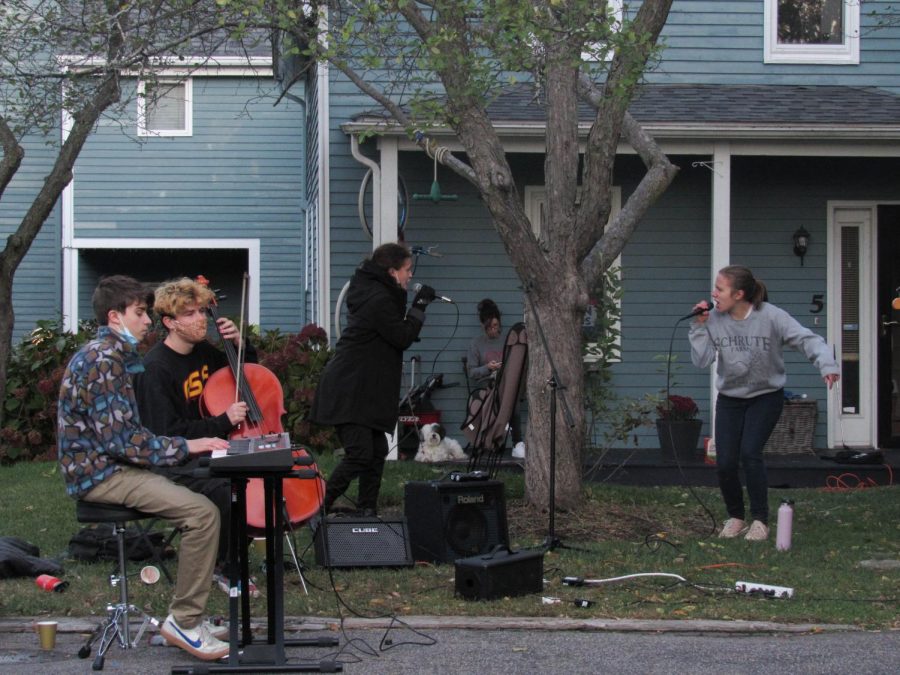Playing Jazz During a Pandemic: A Note From a CRLS Musician
October 29, 2020
Since CRLS transitioned to strictly remote learning, some clubs and activities were able to move seamlessly from in-person meetings to online. For performing arts groups such as the CRLS World Jazz Ensemble, however, being remote has posed unprecedented challenges. First of all, no, we can’t play on Zoom, Skype, Facetime, or any other virtual meeting platform. Believe me, we’ve tried them all, and the music sounds truly awful. Even as a jazz musician drawn to the obscure and abstract, rehearsing through local Wi-Fi is utter chaos with no sense of time, chord change, or rhythm.
After researching alternatives, we discovered a software called SoundJack, which makes it possible to play with others via ethernet cables, practically eliminating all latency. Making use of this software comes with an extensive list of gear, but 200 dollars later, I was finally able to play with my friends remotely. For one-on-one music lessons, classical music, and other pre-arranged music genres, this was great, but for jazz bands, it still didn’t cut it. After months of experimentation with this software, I realized that technology just cannot replicate the highly communicative experience of playing in person, which is one of the most critical aspects of jazz music.
Jazz is all about communication between the players (and sometimes the audience) through melodic and rhythmic improvisation. Jazz originated from the call and response of field hollers from sharecroppers and chain gangs. This form of expressing hardship evolved into the blues, and eventually into jazz, a broader form of expressing moods, feelings, and ideas through improvisation. So many aspects of playing jazz in an ensemble—listening to each other and noticing subtle, physical cues—are missing when playing through a computer screen, even if it’s a lag-free experience. The rest of the CRLS World Jazz Ensemble members realized this too, and we ultimately decided we’d rather find a way to play safely in person than not at all.
Almost every weekend since the summer started, we’ve been meeting at local parks and backyards to have socially distanced rehearsals. These rehearsals provided unexpected benefits, as well. Rehearsing in person provided an excuse to finally get out of the house and see other faces, and it also allowed us to give back to the community as we frequently drew crowds who likely hadn’t seen live music in months. In August, we even got together a few times with a former member of the World Jazz Ensemble and recorded one of his original compositions.
Ultimately, being in a jazz band during the COVID-19 pandemic has further solidified my understanding of jazz: it is a form of communication, one that cannot be easily replicated with technology.








